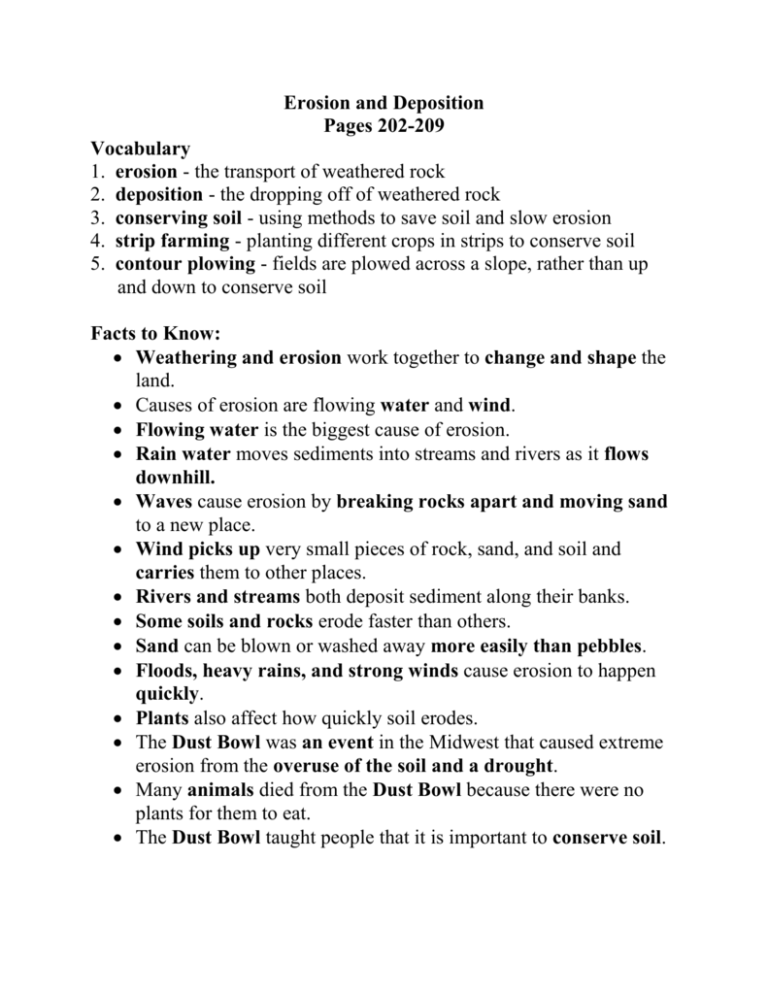Erosion - TeacherWeb
advertisement

Erosion and Deposition Pages 202-209 Vocabulary 1. erosion - the transport of weathered rock 2. deposition - the dropping off of weathered rock 3. conserving soil - using methods to save soil and slow erosion 4. strip farming - planting different crops in strips to conserve soil 5. contour plowing - fields are plowed across a slope, rather than up and down to conserve soil Facts to Know: Weathering and erosion work together to change and shape the land. Causes of erosion are flowing water and wind. Flowing water is the biggest cause of erosion. Rain water moves sediments into streams and rivers as it flows downhill. Waves cause erosion by breaking rocks apart and moving sand to a new place. Wind picks up very small pieces of rock, sand, and soil and carries them to other places. Rivers and streams both deposit sediment along their banks. Some soils and rocks erode faster than others. Sand can be blown or washed away more easily than pebbles. Floods, heavy rains, and strong winds cause erosion to happen quickly. Plants also affect how quickly soil erodes. The Dust Bowl was an event in the Midwest that caused extreme erosion from the overuse of the soil and a drought. Many animals died from the Dust Bowl because there were no plants for them to eat. The Dust Bowl taught people that it is important to conserve soil.











